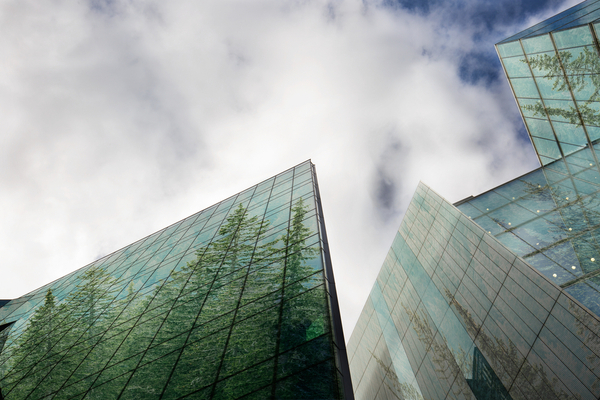People in the United States spend upward of 90 percent of their time indoors — inside homes, apartment buildings, schools, and offices. With the threat of COVID-19 looming over every interaction, those indoor spaces (where the virus spreads more easily) can seem loaded with hidden threats.
Fortunately, scientists already have the tools to make buildings better for people and less hospitable to pathogens like the coronavirus. “The science is decades old on all the benefits that come from healthy buildings, including infectious disease reduction,” says Joseph Allen, director of the Healthy Buildings program at the Harvard T.H. Chan School of Public Health. “But these strategies have not been fully deployed in buildings.”
The COVID-19 pandemic may be the stressor that pushes many buildings to adopt healthy practices, and those benefits could linger long after the outbreak fades. “Once we get in the mindset of using our buildings as a tool we can definitely do things to help in the short term, but also in the long term,” says Anja Jamrozik, a cognitive scientist who studies physical environments. “I do hope that it spurs people to action.”
Much of the information that we have about how to make buildings less hospitable to viruses comes from studies on the ever-present flu. All efforts to create healthy buildings start with the basics: the people who occupy buildings and carry the virus. During active outbreaks, minimizing the risk of disease spread in office buildings starts with keeping people out of them and having as many people as possible work from home. Next is identifying the bare minimum number of people who have to be physically present in the building and bringing them back in.
“If you’re starting a new building you have more leeway, but I do think there are things we can do — for example, adding air purifiers or making sure that the filters are changed in HVAC systems,” Jamrozik says. Buildings can also install sensors that monitor temperature, humidity, and air quality. It’s hard for people to tell on their own what the environment actually feels like (if it’s humid or just hot), so objective measures are the best way to make adjustments.
That’s all got to do with the air you breathe, but another issue is where you sit. People who work in open offices, where desks are close together with no barriers between them, take more days off from work because they say they’re sick than people who have their own office space. People who work in spaces with four walls and a door don’t call in sick as much; they don’t sit only a few feet away from other people, and only breathe in their own air. No single approach can reduce disease transmission on its own, Van Den Wymelenberg says. “It’s gonna be a layered approach. You’re gonna want to implement multiple measures,” he says.
The coronavirus pandemic will absolutely change how buildings are designed, says University of Oregon Professor Kevin Van Den Wymelenberg, who has testified before Congress on the need to transition to healthier building technology. But he thinks it’s still too early to say which design will rise to the top. “I think there’s a lot of speculation still about what that will look like,” he says. People have been quick to declare the death of the open office, but Van Den Wymelenberg says that there are some benefits to that setup that will have to be weighed against the risk: they enhance social interaction and provide better access to daylight.
In general, any speculation around what healthier buildings might look like in the future is still just a guess. But once office designers figure out what really does work, those changes are going to need to happen in all buildings — not just ones where the wealthy live and work. “I really do hope that a lot of these solutions become more democratic, because they’re not that expensive, it just takes care and thoughtfulness to add them to the building,” Jamrozik says.
In the United States, it’s usually hard to get people to do things that are designed to prevent problems, which is why healthy buildings struggled to gain traction. The benefits aren’t easily visible or immediate, even though evidence shows they can make a difference for people’s health and productivity. That’s one reason why, before the pandemic, these designs may have been considered optional. But now, the immediate benefits are clear to anyone worried about catching COVID-19 walking the halls of an office building. Disease-blocking designs are in demand from anyone who has to spend time in a building. And if changes made now stick around for the long term, they could help people feel better indoors even without an ever-present fear of an unknown virus.
“In a pandemic with no silver linings, maybe there’s a glimmer of light here,” Allen says.
—
Photo Credit: zlikovec / Shutterstock.com
